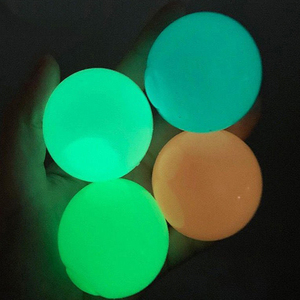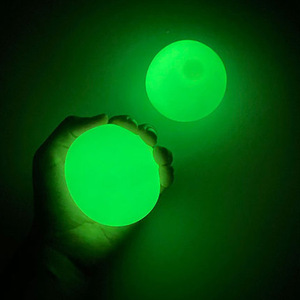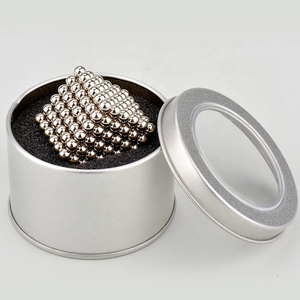
All categories
Featured selections
Trade Assurance
Buyer Central
Help Center
Get the app
Become a supplier

(2183 products available)




















































Ball maze puzzles come in several types that vary in complexity, form, and materials. They offer different levels of difficulty and engagement to cater to various interests and age groups. Here are some standard types:
2D Ball Maze Puzzles
These are flat puzzles consisting of a maze printed or drawn on a surface like paper or cardboard. The maze is often accompanied by a path or channel where the ball is supposed to roll. They are portable and convenient for use when traveling.
3D Ball Maze Puzzles
These mazes are designed in three dimensions, with complex tunnels and pathways for the ball to navigate. They provide a more immersive experience and are usually larger and more complicated than 2D mazes.
Mechanical Ball Maze Puzzles
These involve physical manipulation to help the ball move through the maze. They include levers, sliders, and rotating elements that change the maze's configuration or move the ball along the path.
Marble Run Puzzles
These allow players to construct their mazes using various track pieces, turns, and drops. The focus is on creating an efficient path for the marble to follow, making it an exciting and engaging experience.
Labyrinth Ball Puzzles
These are spherical in shape and have a labyrinthine maze inside. The objective is to guide a small ball through the maze and into a series of holes or pockets. They are usually made of plastic or metal and are quite challenging.
Electronic Ball Maze Puzzles
These incorporate electronic elements such as lights, sounds, and sensors to enhance the puzzling experience. Some may have digital displays that change the maze's layout or provide hints, while others may use lights to show the correct path.
Educational Ball Maze Puzzles
These are specifically designed for educational purposes, to teach a particular subject or skill. They can be used to teach problem-solving skills, spatial awareness, or logical thinking.
Therapeutic Ball Maze Puzzles
These are used in occupational therapy to help individuals enhance their fine motor skills, hand-eye coordination, and cognitive functions. They come in varying difficulty levels to accommodate different skill levels.
Customizable Ball Maze Puzzles
These allow users to alter the maze's layout or design. They can be in the form of interchangeable pieces or digital mazes that can be modified using software.
When choosing ball maze puzzles, consider the material, skill level, and type of maze.
Material
Most ball maze puzzles are made of plastic, wood, or metal. They have different features. A 3D plastic maze is lightweight and durable. It is also a common material for a labyrinth puzzle for kids. A wooden maze looks attractive and is strong. It may have the grain or shine of the wood. Wooden mazes are suitable for kids and adults. Some ball maze puzzles have metal parts. The metal makes the maze strong and lasts long.
Skill level
Ball maze puzzles come in different skill levels. Beginners start with simple mazes. The paths are direct, and the puzzles are easy to solve. As players get more experience, they solve puzzles with complex paths. These mazes have many turns and longer routes. They are more difficult to solve. Some ball maze puzzles have a way to change the difficulty. Players can add or remove obstacles to make the puzzle harder or easier.
Type of maze
There are many types of mazes to choose from. A classic maze has a simple path. The ball must travel through the maze to reach the end. A labyrinth maze is more complex. It has many paths that look the same. The ball gets stuck if it takes the wrong path. In a 3D maze, the ball moves up and down as it travels sideways. Some mazes have tracks with turns and loops. A spiral maze is circular and moves inward to the center. The paths are curved, and the ball must follow them.
Ball maze puzzles are designed to challenge and amuse users as they guide a ball through twisting paths to reach the endpoint. They enhance fine motor skills, hand-eye coordination, cognitive abilities, and problem-solving capabilities. They find applications in entertainment, education, and therapeutic settings, catering to a diverse age group with varying levels of difficulty.
Ball maze puzzles typically exhibit several essential features that contribute to their engaging and challenging nature. They have a three-dimensional structure that adds depth to the puzzle, making navigation more complicated. Another significant characteristic is the dynamic elements, such as moving parts or tracks that change, which emulate the real-life situations and make the puzzle more challenging and enjoyable to solve.
Additionally, many puzzles are equipped with interactive controls, like levers or knobs, that the user manipulates to alter the maze's layout or to move the ball. This hands-on interaction boosts the cognitive function and fine motor skills of the user. Further, some ball maze puzzles have magnetic features that assist in guiding a ball made of metal through the maze. The magnets either attract or repel, depending on their placement, providing an extra level of challenge.
The design of ball maze puzzles is critical in determining their appeal and level of difficulty. They are usually made from materials that are long-lasting and fit for frequent use, such as plastic, metal, or wood. Each material gives a distinct feel and durability to the puzzle. As earlier stated, the degree of complexity is a vital design factor. Simple mazes work well for novices or younger kids, while intricate designs suit advanced players. To increase the challenge, some puzzles have multiple paths or hidden routes.
Further, the aesthetics of the puzzle, which includes its color and overall appearance, are significant in attracting users. Eye-catching designs can make a simple game look more interesting. For younger kids, bright colors and fun shapes are usually more appealing, while older users might prefer something more sophisticated. The size and portability of the puzzle are also essential. Smaller puzzles are more portable and easier to store, while larger ones might offer more detailed mazes.
Here are some typical safety features and considerations for ball maze puzzles:
Non-Toxic Materials
Non-toxic and safe materials, such as BPA-free plastics, should be used to make the puzzles. This guarantees that no harmful substances are released if the item is chewed or touched.
Smooth Edges
Smooth edges and corners help prevent cuts and scratches. This is particularly important for toys meant for young children who may handle them roughly.
Secure Components
Securely attached components prevent small parts from becoming loose and posing a choking hazard. Fasten all pieces, such as balls, pins, and other attachments, tightly.
Choking Hazard Warnings
Age recommendations and choking hazard warnings inform consumers of the suitable ages for the product and the potential risks. This helps parents and caregivers choose safe toys for their children.
Durable Construction
Durable construction ensures the puzzle can withstand regular use without breaking or splintering. This is important for maintaining the toy's safety and integrity over time.
Here are some common quality features of ball maze puzzles:
Durable Construction
Ball maze puzzles are often constructed from long-lasting materials like wood, metal, or strong plastic. The materials guarantee the mazes endure regular use and last a long time.
Smooth Pathways
The pathways in high-quality ball maze puzzles are usually smooth and well-made. This ensures the ball can move freely without getting stuck or impeded.
Precision Engineering
These puzzles require precise engineering to ensure the maze's layout is correct and all parts fit together well. This maintains the challenge and fun of the puzzle.
Variety of Challenges
Quality puzzles provide different challenges and difficulty levels. This caters to a wide range of skill levels and keeps the puzzle interesting.
Size and Weight
The size and weight of a ball maze puzzle affect its quality. Larger and heavier puzzles are usually more stable and easier to manipulate. This is compared to smaller and lighter ones, which may be less stable.
Q1. Are ball maze puzzles beneficial for children?
A1. Yes, ball maze puzzles are highly beneficial for children. They help in the development of fine motor skills, hand-eye coordination, and spatial awareness. These puzzles also provide a sense of achievement and improve focus and concentration.
Q2. How are ball maze puzzles maintained?
A2. To maintain ball maze puzzles, keep them dry and dust-free. If needed, use a damp cloth to wipe the surface. Avoid using abrasive cleaners, as they can damage the finish or markings.
Q3. Are ball maze puzzles safe for children?
A3. Yes, in general, ball maze puzzles are safe for children. However, parents should choose the right ones according to their children's ages and abilities. Those with smaller parts can be a choking hazard for younger kids.
Q4. What materials are ball maze puzzles made of?
A4. Ball maze puzzles are usually made of wood, plastic, or metal. Each material has its benefits. For example, a wooden puzzle is long-lasting and offers a classic feel.
Q5. How do ball maze puzzles help reduce stress?
A5. Ball maze puzzles help reduce stress by providing a distraction from daily worries. The act of moving the ball through the maze can be soothing and help to clear the mind.